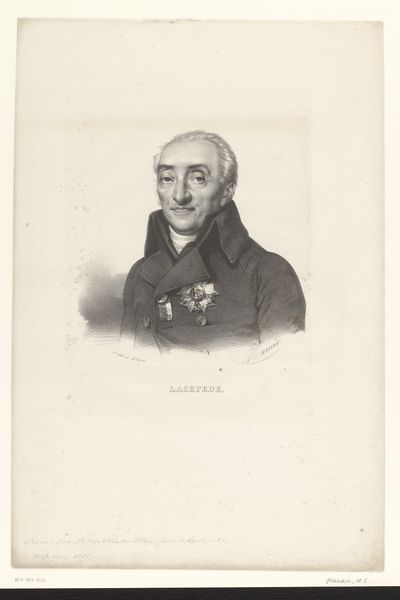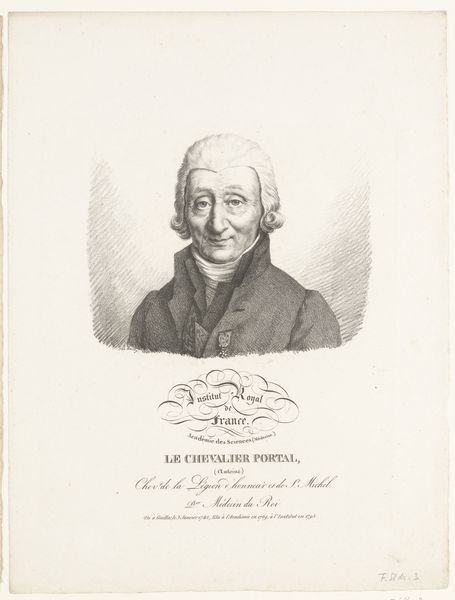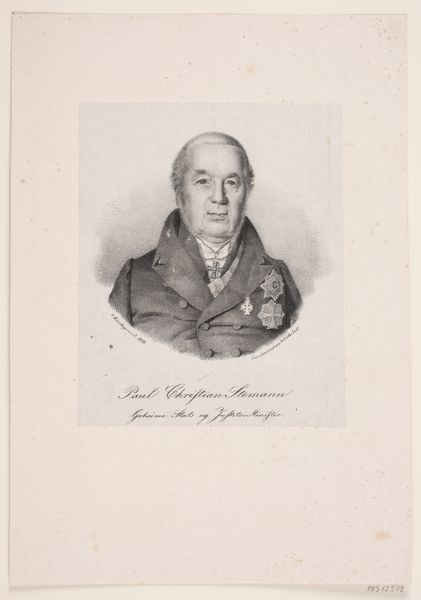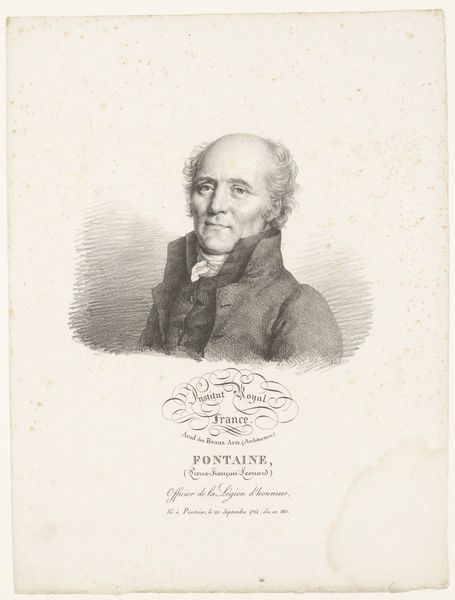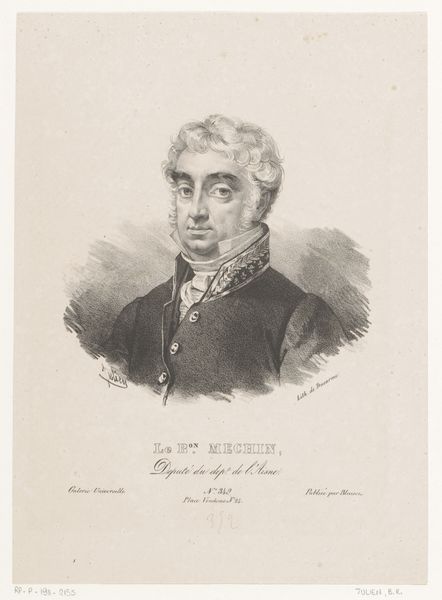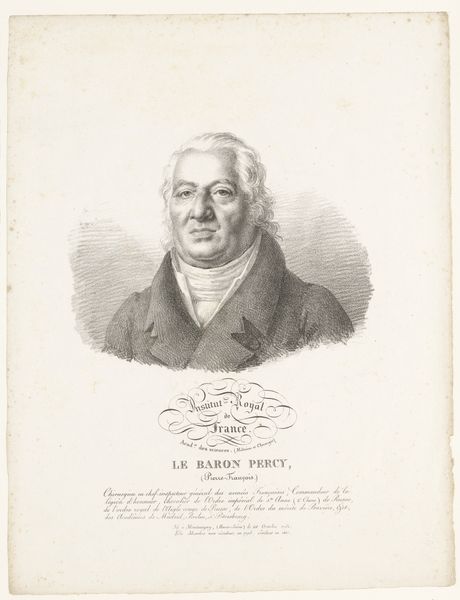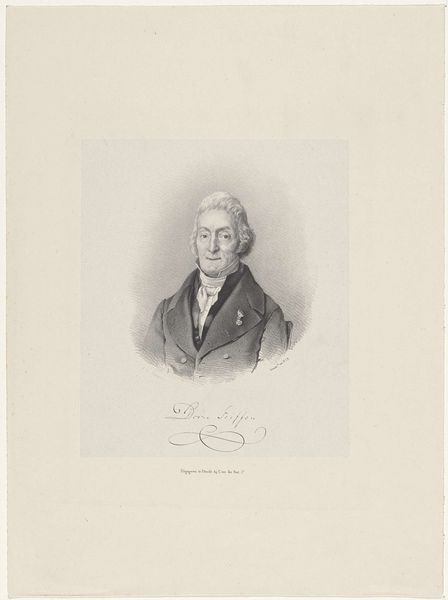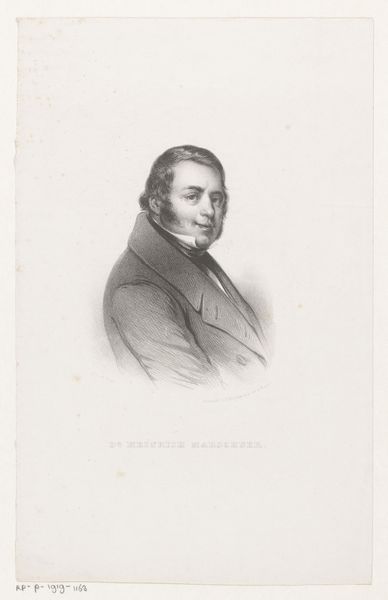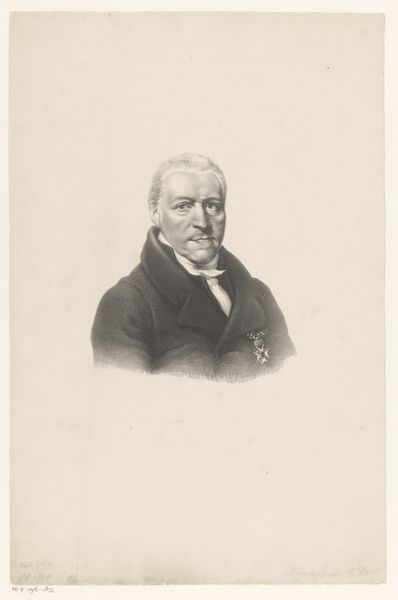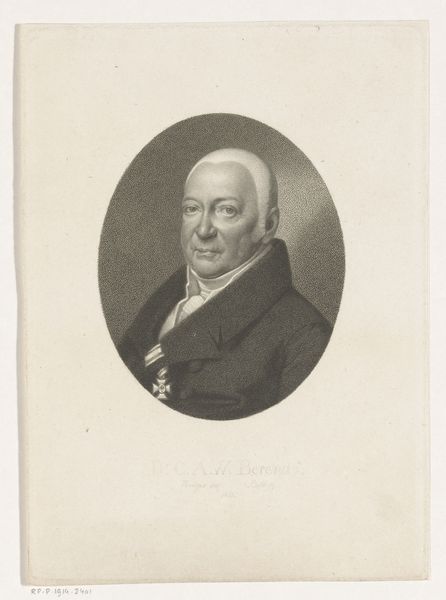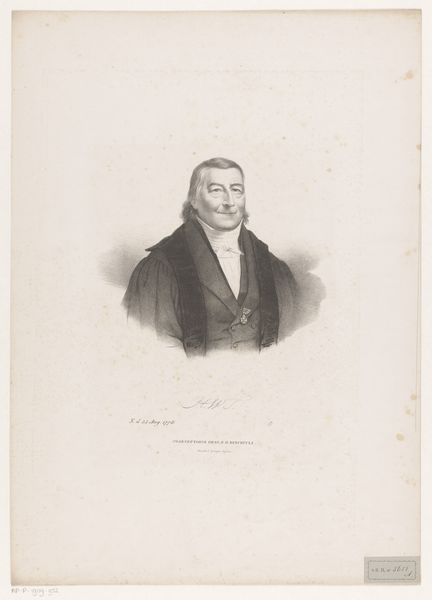
engraving
#
portrait
#
neoclacissism
#
old engraving style
#
portrait drawing
#
history-painting
#
engraving
Dimensions: height 358 mm, width 274 mm
Copyright: Rijks Museum: Open Domain
Editor: Here we have Julien-Léopold Boilly's "Portrait of the Naturalist Bernard Germain de Lacépède," an engraving from 1820. I'm struck by the precision of the lines. It feels almost mass-produced, yet detailed. How should we interpret this portrait? Curator: Consider the engraving process. It allowed for reproducibility, enabling the wider distribution of Lacépède’s image, but the level of fine detail still demanded skilled labor and time. How do these things influence our understanding of the subject’s status and the context of this artwork's creation? Editor: So, the material process itself elevates Lacépède and makes the image accessible. Was this accessibility an attempt to bridge the gap between the elite and the broader public, showcasing enlightenment figures? Curator: It’s crucial to examine how printmaking democratized images but remained constrained by socio-economic realities. The artist is creating a portrait using a printing medium. How might these engravings circulate, who had access to them, and what impact did the industrializing processes of printmaking have on the valuation of this and other portraits? What effect did the means of production have on the artistic integrity of the portrait? Editor: Interesting point. The material constraints and possibilities really shaped the social reach and impact of the work. I guess I hadn’t thought about how industrial processes would interact with art in this way. Curator: Exactly. By analyzing the medium and the economic context, we understand how seemingly straightforward images participated in complex social dynamics. Hopefully now you will think of process and production differently.
Comments
No comments
Be the first to comment and join the conversation on the ultimate creative platform.
